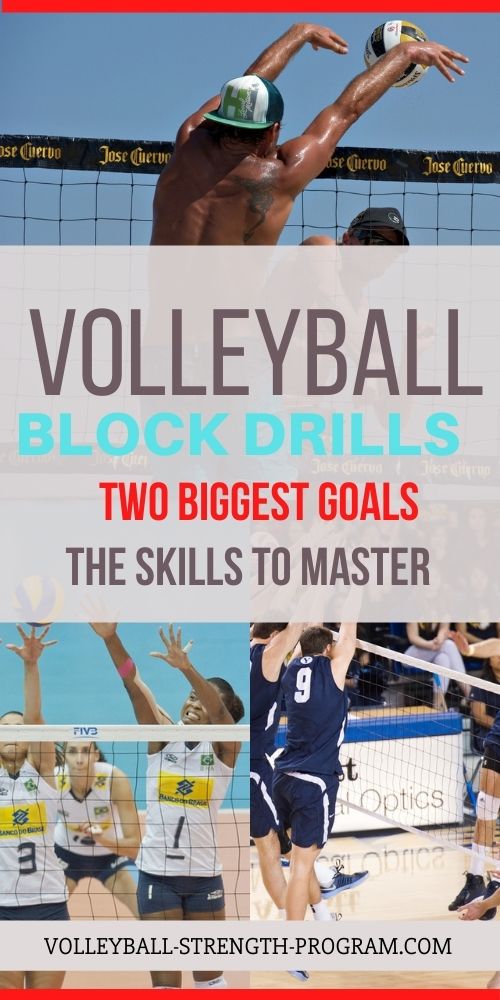Blocking in volleyball is important because the block is the first line of defense.
Generally, the blocker has one of two goals…
- Stop the ball from coming across the net.
- Deflect or funnel the ball to a teammate.
When you successfully stop the ball from crossing, this will result in either a point or at least force the opponent to attempt the attack again.
If you are able to funnel the ball to a teammate, this gives your team a chance to run an offensive play to score a point.
Sequence for Blocking in Volleyball
Here is the sequence player’s need to focus on for blocking.
- Know your blocking responsibilities. This means be aware of what types of attacks you need to prepare for.
- Identify the attackers and setter. You do this before the ball is served. And you should do this every time the opponent is about to transition into an offensive attack.
- Read and anticipate where the ball is being passed. The better you anticipate, the more easily you will get to the correct position to block.
- Very quickly watch and anticipate the setter as the setter is about to set the ball. Knowing where the ball is going is critical to getting to the correct position.
- Follow the players you are tracking and call out what they are doing. It’s critical your team is on the same page to what is happening. Communicate well with your teammates so all players can effectively get to the correct positions.
- Move to the correct position according to your responsibilities.
- As you jump to block, extending the arms/hands over the net to take away the area you’re responsible for. Being in the correct position isn’t just important for blocking, it’s also important for the teammates playing defense. Poor blockers confuse teammates. Your teammates see you block and if you aren’t blocking the correct area, this will throw off teammates and ruin the strategy for defense.
Master these Skills – Blocking in Volleyball
- Recognize when to block.
- Develop the correct footwork.
- Learn the body position for blocking.
- Learn the correct hand and arm position.
- Learn how to read and anticipate the opponent.
- Practice “timing” the block.
- Coordination and communication with teammates.
- Scout your opponent so you have a better idea of what is likely to happen.
Here are some things to think about
It’s important to pay attention to the setter, what the ball does after it’s set, and the attacker. Usually the hardest part of blocking is “timing” the block. To be able to time the ball effectively, you need to anticipate.
- Where is the attacker relative to the ball they are about to attack? Is the attacker going to be late getting there? If the attacker is late and is likely to struggle attacking the ball, you don’t want to make an unforced error when blocking.
- How tight is the set? If the set is tight, you may decide to penetrate as best you can and surround the ball with your hands so the attacker can’t hit around you. An experienced blocker likes to see the ball go tight to the net because this is an easy opportunity to block the ball.
- Is the set off the net? You need to recognize when the set is off the net because in this situation the blocker needs to wait longer before jumping, or maybe not jump at all. You don’t want to make a blocking error when the set is far off the net because this is usually the best situation to rely on scoring in transition.
- Is the set low? If the set is too low for the attacker then you should anticipate a ball that is tipped or possibly an off-speed attack.
Out-of-System – Blocking in Volleyball
It’s important for front line players to recognize when the opponent is out of system. An out of system attack is when the play the opponent is running isn’t the primary system for an attack.
When the opponent is out of system, the team should be preparing to transition.
An example would be when the team recognizes that a “free ball” is coming. There’s a big advantage to knowing what’s coming because if you know what’s coming then you can start moving to get in position sooner.
The most successful teams are able to run an effective attack. And to score in transition, the blocker needs to get off the net to get in the correct position to start the approach to attack.
Position for the attack is key and this all starts while anticipating the opponent playing the ball.
If you enjoyed these tips and would like to keep it close to you at any time, just save this pin to your Pinterest Volleyball Training Board.

Volleyball › How to Play Volleyball › Blocking in Volleyball
